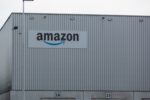
The logistics industry contributes significantly to greenhouse gas emissions. With its reliance on fuel-intensive transportation and expansive warehousing, reducing the carbon footprint in logistics is crucial for a sustainable future.
Amid rising consumer demand for green practices and tightening environmental regulations, businesses are under pressure to implement concrete steps toward decarbonization. Measures like installing carbon monoxide detectors in warehouses and facilities not only ensure safety but also help monitor air quality, indirectly supporting emission-reduction goals. According to an analysis by Consegic Business Intelligence, the market for carbon monoxide detectors is estimated to exceed $906.92 million by 2030, up from $691.74 million in 2022, and grow at a compound annual rate of 3.7% from 2023 to 2030.
Efficient route planning and scheduling play a vital role in cutting fuel consumption and reducing carbon emissions. Using advanced software driven by artificial intelligence and machine learning, logistics companies can dynamically plan routes that avoid traffic, reduce idling time, and minimize mileage. UPS’s Orion system, for example, evaluates millions of route options and optimizes delivery paths, reportedly saving the company 10 million gallons of fuel annually.
Real-time data from GPS, weather forecasts and traffic information further enhance route efficiency. They allow logistics companies can track each route’s impact on fuel efficiency. Companies looking to implement similar strategies should start by identifying high-traffic routes, testing optimized paths, and measuring cost and emission reductions over a set period to assess impact.
The shift to electric and alternative-fuel vehicles is essential in reducing the logistics sector’s dependency on fossil fuels. Electrification of fleets is becoming more feasible with advances in battery technology, longer driving ranges and lower costs. Amazon.com, for example, has partnered with Rivian to develop a fleet of electric delivery vans, setting a target of 100,000 vehicles by 2030.
Other alternative fuels such as hydrogen, biodiesel and compressed natural gas (CNG) offer flexible options for reducing emissions in heavier-duty vehicles, which electric technology has yet to fully support. When considering these options, logistics companies should assess the emissions profile and cost implications for each type of fuel and create a phased adoption plan. Incentives, such as government grants for green fleet purchases, can help offset transition costs.
Multimodal transportation reduces emissions by balancing efficiency with environmental impact. Rail and waterway transport emit less carbon than road and air, so blending these methods where possible can substantially lower a company’s carbon footprint. Coca-Cola, for one, has increased its use of rail transport for long-distance shipments to reduce reliance on trucks.
To evaluate environmental impact, logistics companies can measure emissions per ton-mile across transport modes. By switching even a fraction of their goods to lower-carbon options like rail or waterways, companies can make a measurable impact. Packaging is another significant contributor to logistics-related emissions. The adoption of lightweight, recyclable or biodegradable materials can help reduce the carbon footprint. IKEA has replaced traditional Styrofoam packaging with paper-based alternatives in select product lines, reducing material weight and promoting recyclability.
The reduction of package size and weight is another strategy that allows more goods to be transported per load. Establishing sustainable sourcing policies with suppliers can also ensure that packaging materials meet low-carbon standards. Companies can work with vendors to select packaging materials that both protect products and reduce environmental impact.
Energy-efficient warehouses and facilities can make a significant impact on carbon footprint reduction. Companies can start by installing energy-efficient lighting, such as LEDs, and smart HVAC systems that adjust based on occupancy. Amazon has integrated renewable energy sources, including solar panels, in many of its warehouses to offset power needs.
Additionally, motion-sensing lighting systems can lower electricity use, and warehouse layout optimization can reduce travel distance for workers and equipment. The transition to renewable energy sources for facilities, such as installing rooftop solar panels, offers a path to long-term sustainability.
Carbon offsetting provides a way for logistics companies to neutralize emissions that are difficult to eliminate, through investment in projects such as reforestation, renewable energy, and methane capture. DHL offers a carbon-neutral shipping option, whereby customers can offset their shipping emissions through certified projects.
To make an offsetting program effective, it’s essential to choose credible projects that are verified by independent agencies. Companies can also strengthen corporate social responsibility (CSR) efforts by aligning offset projects with their values, such as support for community renewable energy projects. In doing so, they should prioritize transparency, using certified reports to document the impact of their offset investments.
Data analytics and the internet of things are powerful tools for tracking and reporting emissions across every stage of logistics operations. Companies can install IoT sensors on vehicles and within warehouses to collect real-time data on fuel consumption, mileage, and energy use. The data enables logistics firms to monitor emissions accurately and set achievable reduction goals.
The setting of key performance indicators, such as emissions per ton-mile or per shipment, can provide benchmarks for continuous improvement. Maersk uses data analytics to monitor emissions from its shipping fleet, and has set ambitious reduction targets based on collected data. By tracking progress over time and generating transparent, data-driven reports, businesses can meet sustainability commitments while staying accountable to stakeholders.
Reducing the logistics sector’s carbon footprint requires a multi-faceted approach that includes optimized routing, fuel transitions, packaging innovation, energy efficiency, and reliable offsetting programs. By implementing these specific strategies, logistics companies can contribute to a sustainable future while staying competitive. The time to act on climate is now, and businesses that lead in carbon reduction will set the pace for the logistics industry of tomorrow.
Saili Sonawane is a professional content writer with Consegic Business Intelligence.







